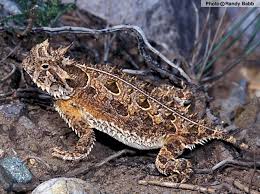TERRESTRIAL ADAPTATIONS IN VERTEBRATES
The idea of adaptation maintains that organisms (animals and plants) are structurally and functionally designed for meeting the needs of life in the habitats in which they live. Thus, adaptations include adjustments by which an organism accommodates itself to its environment. These may occur by natural selection.
Desert animals or xerocoles have adaptations for following three sorts :
- Moisture getting.
- Moisture conservation.
- Self-defense against physical and organic environment.
Moisture getting
- At certain places of desert is found deep ground water, even then the surface sand is dry and burning. Hence,for getting the deep water, rain water from the superficial layers of sand, absorption of dew water, the xerophytic plants (e.g., date palm) and xerocoles (e.g., Moloch) have varied adaptations.
- The date palm has long deep exploring and horizontally spreading roots. The sand lizard or Moloch has hygroscopic skin to absorb water like the blotting paper. Its surface is covered with thorn-like scales.
- A few animals absorb dew drops along with vegetation food. Barrel cactus affords drinkable water to thirsty desert people.
- Desert rabbit, tortoises and wood rat (Neotoma) eat succulent plant for their water need. Jerboas, kangaroo rat (Dipodomys), pocket mouse (Perognathus) and certain other rodents eat dry seeds and vegetation and quench their thirst.
- Carnivorous animals feed on their prey for food and water. Grasshopper mice of western North America and long eared hedgehog of Sahara desert eat insects and small rodents for getting water.

Moisture conservation
After getting moisture it becomes essential for the xerocoles to conserve it. As a result, desert animals contain the following types of adaptations for the water conservation.
- Camel exhibits many adaptations for water conservation.
- To avoid water loss through skin, the horned toad (Phrynosoma) has hard and rough skin and Moloch has scales and spines all over the body surface (i.e., skin).
- Uromastix (desert lizard) store water in large intestine.
- Desert mammals has thick skin to avoid water loss by perspiration. In them the number of sweat glands in the skin are reduced or totally absent.
- Desert insects are wax proof.
- To conserve water, desert animals remain in burrows during the day time and come outside during night when the percentage of moisture in their burrow and outside is equal. Certain animals plug the mouth of their burrows during day time.

Self defence against scorching sun
The desert animals protect themselves from the extreme heat of the sand and arid climate by the following type of adaptations:
- In burrow-digging species of reptiles, the nostrils are directed upward instead of forward. In most snakes nostrils are either reduced to pin holes or protected by complicated valves.
- The eyes of Typhlops (a burrowing desert snake) are overhung by the sheath. In ostrich and camel, the eyes are protected by reflecting heat of the sand by possessing the long neck.
- In lizard Mabuya, the lower lip becomes enlarged with a transparent window in it.
- The ear opening of desert animals is either small or protected by fringes or scales or they may be abolished.
- Possession of venom is another desert adaptation (self-defence). Almost all desert snakes are poisonous. All poisonous spiders are also found in desert. Scorpions too are common in deserts.
- Gazelle (antelope) resembles the general colouring of landscape (white on sand, dark grey on volcanic rocks). It provides a good example of self-defence.
Discover more from ZOOLOGYTALKS
Subscribe to get the latest posts sent to your email.


Pingback: CAUSES OF EXTINCTION OF WILDLIFE | ZOOLOGYTALKS | 2022